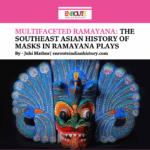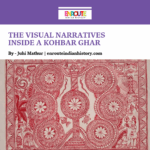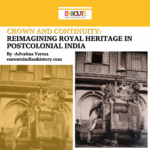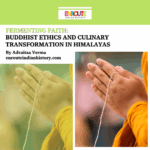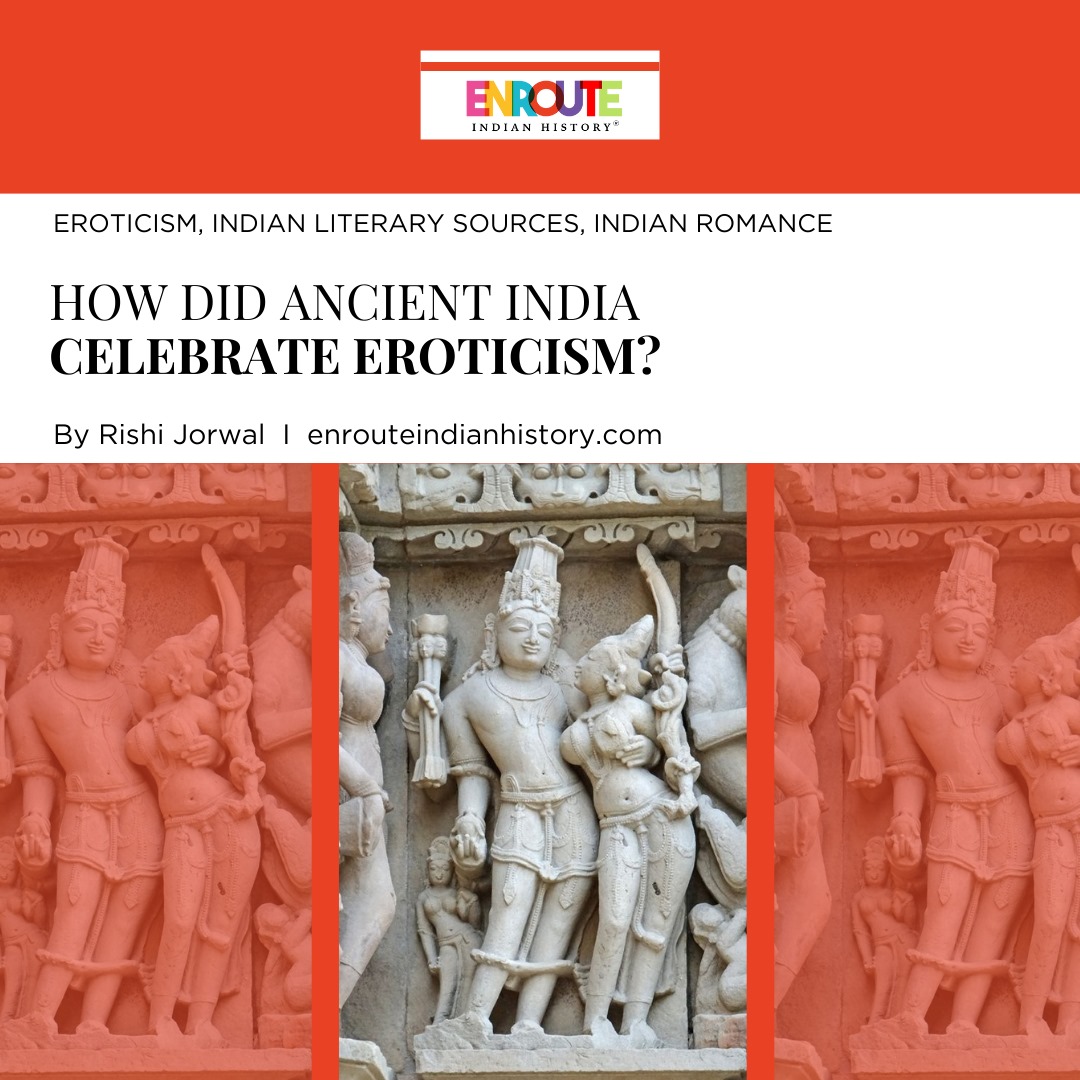
Almost every poet in his or her creation has drawn inspiration from the seasons, taking inspiration from the smell of the air, beauty of the moon. This is true for almost all the poets all over the world. In India, soon enough the season of ‘falgun’ will come, often related with the longing of a lover to meet her beloved in the thumris and bandish(s). Describing the romance and intimacy is a tough task. Such pieces of art, whether it is a painting or a piece of literature or even sculptures and material remains, all of these have the ‘Sringar’ ras (literally meaning flavour). Sringar ras deals with the showcasing of aspects of love, romance, intimacy and eroticism of the human life into the art form that artist concerns himself/herself with. In this article we shall delve into the texts dealing with eroticism and the related emotions of love, pleasure, particularly the Kamasutra. Starting out with the description of Kamasutra, we will look how Kamasutra is seen in the present times. The text Gita-govidam which is quite interestingly both devotional and erotic will be discussed too and most interestingly the ideas of Homo-eroticism that the text talks about. The reader is suggested to have an open mind and see both, the article and the text itself to be a move to normalize the talks on Sex, pleasure, love, and eroticism.
INTRODUCTION TO KAMASUTRA

Starting with a rather basic topic and following the features of effective writing, this section will introduce the reader with text which is of concern. Kamasutra was compiled in between the second and fourth centuries CE, by Vatsyayana. We know nothing about the author except from what he has mentioned in the scripture. The second question in line such a case is about the audience. The people for whom this was written. As it was purely in sanskrit, it is considered that the text was mainly popular among the upper class, the elites and the wealthy namely, as they could commission a copy to be made for them. The book is about the art of living, finding partners and maintaining a power in marriage.
Now, it is true that Kamasutra can be seen as a drama, and just like most of the dramas and storylines, it has seven acts. The first acts sets the stage for the narrative by introducing the hero, a bachelor, who sets up his pad. This lead protagonist of ours will perfect his sexual techniques in the second act and will be successful seducing a virgin in the third. Soon he’ll get married and have children, which will make up the fourth act. Soon his ‘boredom’ will lead him to get attracted towards other married, courtesans and with the old age he will resort of magic spells and Viagra. (Doniger, 2003) Even a basic interpretation will make it clear the acceptance of male adultery by the writer. The Kamasutra also has really interesting views on women. Which we will focus on in the next section.
THE ‘HEROINE’
The sutra, has really paradoxical views on this subject. The reader is advised to not to examine the text with the current feminist ideals as every thinker is a prisoner of his times although Vatsyayana seems to be someone who would even go against the conventional ideals and notions and also . the reason why this rather debatable statement is true is because Vatsyayana advocates the idea of a women abandoning his husband if he cannot fulfill her needs of love, she has every right to leave him or hate him unlike manusmriti which asks a women to worship her husband like god, even if he is not a good man and full of vices. Today where the talks on sex and pleasure are considered to be traits of the ‘unmannered’ in an orthodox society, vatsyayana suggests that women should indeed learn kamasutra before they reach the prime of their youth which can be considered as the years of adolescence. But now, as warned before, there will be a lot paradoxes proposed by the writer, the text justifies rape as a wedding device, by suggesting that ‘her mouth says no, but her eyes say yes’. (Doniger, 2003) The aggression is also permitted from the male side if the lady tries to resist as the male is the active participant and the female is the passive one. Now clearly the text is promoting rape mentality and is not truly feminist. However this is not it, last but not the least the assent to the practice of village headmen and government official can simply ‘win’ women the just words, with women having no voice in it. This case of Kamasutra, makes it even harder to include the text in a single genre or category
THE ‘THIRD NATURE’
The ideas on homosexuality have been much debated for years, especially in recent years with rise of new sigma culture. In Indian context one of the main arguments often heard is that these are all either western ideas or were introduced by the Mughals, pointing towards the mentions of homosexuality by Babur in his memoir. (Eraly, 2007). In such circumstances Kamasutra is nothing but the simplest evidence to prove these arguments folly. The ideas of lesbianism and men with the sexual orientations and inclinations for other men have been recorded in the text. Vatsyayana was liberal enough to not call such men as kliba, used for those who were considered to impotent or for those who did not act like men. however he did used the words like ‘she’ for them along with calling them of the third nature. By the third nature the author wants to point towards there abilities and characteristics which were both masculine and feminine. Interestingly, the author rejects the practices where homosexuality was punished but at the same time he also tries to suggest that if a child is born by the acts of two lesbians he will be one with no bones. (Doniger, 2003)
KAMASUTRA: THIS OR THAT?
Any individual interested in the ancient Indian history and culture would surely know that ‘Kama’ in those times was not seen as something vile and obscene rather it was one of the four aims of life. Kamasutra is a text seen with many different viewpoints. The biographer of Sir Richard Francis Burton, the first person to translate the text, maintained that he was the one who ‘discovered’ it and before him it was long been forgotten. This will be the first in the list of the perspectives on the text that we will be discussing. Wendy Doniger in his work on the text calls Sir Burton a racist, an orientalist and someone who was overcome by the feeling for romanticism for his homeland. He accuses him of stereotyping the colonised people. Except that burton himself refers to an eleventh century commentary on the text. Kamasutra in today’s time, sadly, is described as the ‘Best Sex handbook’ and something which mainly concerns itself with various positions. It is true however that text has a major portion dealing with the different acts and positions and description of how the man and the woman experiences the pleasure in their own ways, but the text does not stop just there. The second in line is Doniger himself, who tries to tackle with this misconceptions. Doniger maintains that in times where sexually explicit novels, and movies are available almost everywhere another book dealing with the same subject is nothing worth considering unique. The reason why Kamasutra is unique because interpreting it will add on to our current understanding of the times and the society. Kamasutra is a really complex text to understand and interpret. It has way too many shades and stands to be considered to be in any one genre or theme. The text has modern ideas of the gender, liberal attitudes for women and also the boundaries imposed on them. Indira Kapoor, the director of International Planned Parenthood at the South-Asian regional bureau considers the text to be neither obscene nor pornographic but rather a scientific and serous study of human sexual behaviour. (Puri, 2002)
CAN EROTICISM BE DEVOTIONAL?
It is true that the question above can be a very controversial one and rather one which may even hurt sentiments of few even though there’s no such intention. Gita-govindam is a devotional cum erotic poem written by jayadeva for his god, Lord Jagannath. As far as we know jayadeva used to sing his compositions and her wife, padmavati used to dance. Both of them were doing this in the service of their diety. It is a classic example of bhakti through sringar. One may ask how can jayadeva mix eroticism with bhakti? The answer is not so complex, Jayadeva’s compositions have only three characters Radha, Madhava and Radha sakhi, both, Radha and Krishna are completely in love with each other and overcome by the feelings of respect and service, Radha sakhi on the other hand is devout to both of them, symbolic of the devotee of the two. To jayadeva, Radha-Madhava were a cosmic couple, just like what Siva-Uma was kalidasa, and hence whatever they do will automatically become pure and full of ‘bhakti-ras’. The relation of lover and beloved can be traced back to the upanisadas. This is the example of ‘madhur’ bhakti. Madhur which literally means sweet, in this context talks is the feeling of love and romantic devotion towards the god, the prime example being mirabai. (Mungurulker, 1983)
All discussed so far we can very easily say that eroticism is nothing new in India rather centuries old, and more importantly neither obscene or vile. From romantic reasons to please your almighty, the erotic ways were always an option worth considering if not the first one. It seems those who lived on this land centuries ago had more clarity about subjects that we today debate about. This is not to say that there were no conflicts present at the time but one can always look up to their forefathers, and choose what to continue to accept and what to reject without a second thought. The Kamasutra, which we have talked about mostly in the article, can be called text that was ahead of his time, and advocated the ideas which are now ‘rights’. As a closing statement, the reader is very respectfully reminded of the fact that if you accept or reject from anything that is a part of our past or even culture, the decision should be made after arguments that you truly stand for.
Works Cited
Doniger, W. (2003). Kamasutra : it isnt all about sex. kenyon review, pp. 18-37.
Eraly, A. (2007). Emperors of the Peacock Throne . Penguin India.
Mungurulker, A. (1983). Gita-Govindam structure technique and substance. annals of the bhandarkar research institute. bhandarkar oriental research institute.
Puri, J. (2002). Concerning Kamasutra: Challenging Narratives of History ans Sexuality. spring , 603-639.
Images
Redeeming the Kamasutra by Wendy Doniger – https://www.publishersweekly.com/pw/by-topic/industry-news/tip-sheet/article/69632-why-the-kama-sutra-still-matters-today.html


